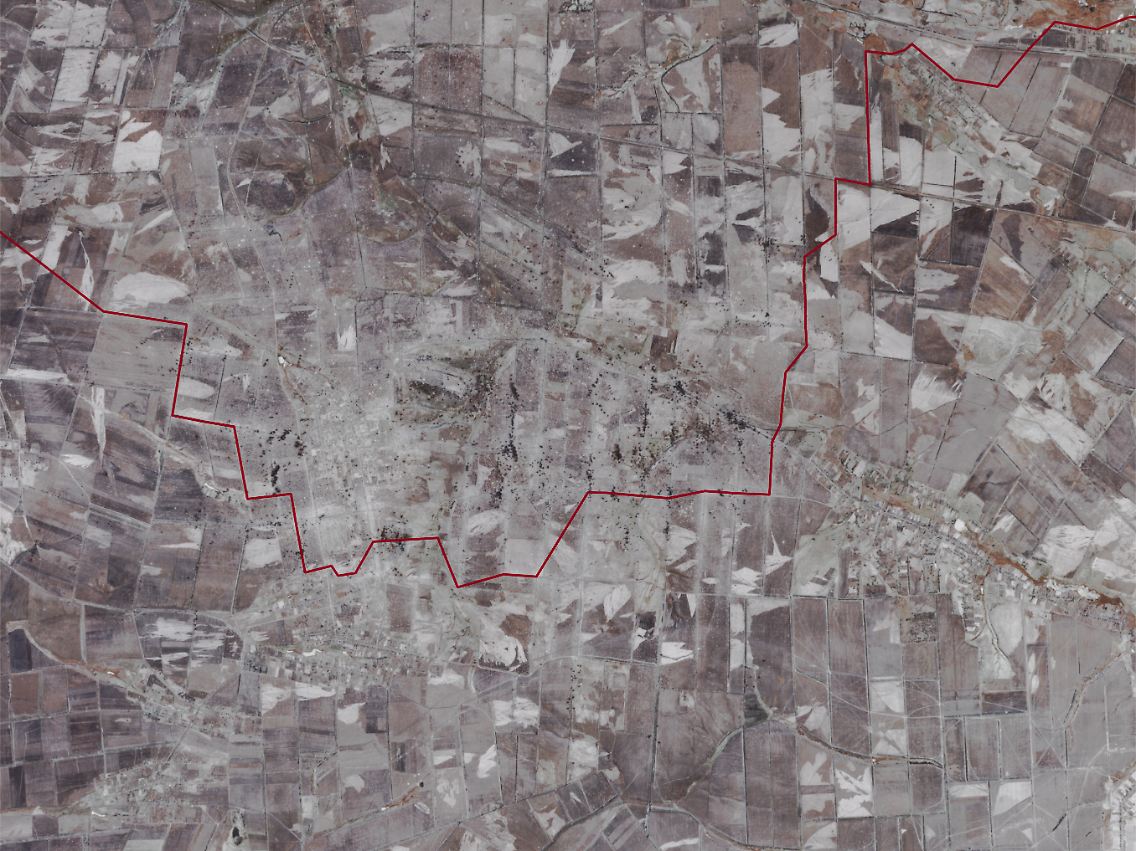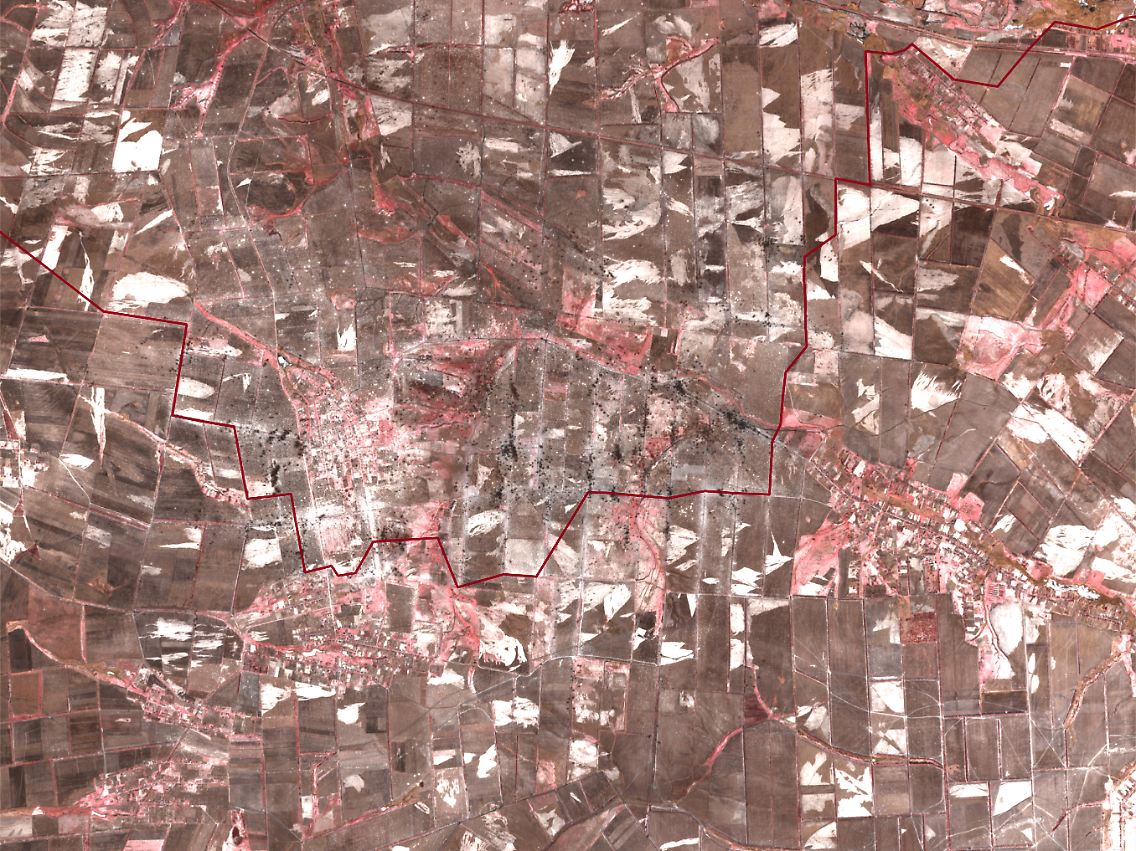Rare insights into Ukraine
Satellite photo reveals traces of heavy fighting
By Martin Morcinek
January 31, 2024, 6:11 a.m
Listen to article
This audio version was artificially generated. More info | Send feedback
On the Zaporizhzhia front in southern Ukraine, the defenders are under massive pressure. Images from space indicate massive artillery fire: countless dark impact craters gape in the wintry landscape around Robotyne.
The weather remains the dominant factor at the front: in the second winter of the war in Ukraine, the ground in the south of the country was temporarily deeply frozen. In mid-January, the area in the front arc near Robotyne – the scene of heavy fighting – was temporarily covered by an almost completely covered blanket of snow, as current satellite images show. The fighting left clear traces in the icy landscape.
From space, the extent of the bombardment on the ground becomes clear: fresh impact craters stand out as deep, dark scars in the combat zone. Older, snow-filled shell craters, on the other hand, appear white in images from European Earth observation satellites.

Winter War in Ukraine: The section of the front near Robotyne with the front line drawn.
(Photo: ntv.de © ESA, Sentinel Hub)
The pattern provides unusual insights into the war at the front: between Robotyne and Werbowe, huge areas are covered in smallpox-like spots. Particularly west of Robotyne, on the southern outskirts and open areas towards Werbowe, areas plowed by countless explosions appear along the forest strips.
The town of Robotyne has long been known nationwide: a few weeks after the start of the Ukrainian summer offensive, the first Leopard battle tanks appeared here during the storming of the village. The Ukrainian advance was to run straight through the region towards the coast. Since then there has been intense fighting in the area. Since the fall, the main battle line has been running in an arc extending far to the south around Robotyne.
In the satellite image, the debris from Robotyne can be seen as a brighter area slightly left below the center of the image. The neighboring town to the south, Novoprokopivka, is still firmly in Russian hands. Extensive mine barriers and the well-known Russian fortifications extend on both sides.
The town of Werbowe is about ten kilometers away in the east as the crow flies. In between, the line of the front marked in red runs as it emerges from the military situation reports, consistent information and verifiable video recordings.


False color image for improved contrast: In icy terrain, fresh explosion craters appear as black spots, snow-filled funnels appear as white.
(Photo: ntv.de © ESA, Sentinel Hub)
The satellite images only show a small, almost 20 kilometer wide section of the front – but at least one of the most important hot spots at the moment. Overall, fighting in Ukraine is taking place along a strip of terrain that is more than 1,000 kilometers long and up to 30 kilometers wide. At various points on the front, the Russian invading army’s artillery superiority is growing.
The European Sentinel-2 satellites, whose cameras took the images, orbit the earth at an altitude of around 800 kilometers. In the resolution published here, neither Ukrainian positions nor other militarily significant details such as trenches or even individual vehicles can be seen in the images.
In addition, the recording date was a little further back: a short gap in the winter cloud cover enabled the civil earth observation satellites to get a brief look at the front in mid-January. The snow, which has not yet completely melted at this point in time, offers the rare opportunity to roughly chronologically classify developments on the ground.
From a distance, the human suffering and brutality of war can hardly be imagined either way. One thing is certain: the constant shelling, the war imposed by Russia’s invading army and the constant deadly threat will not only leave long-lasting traces on the landscape.
